Higher Performance Insights | THE FIELD GUIDE TO BUILDING AN AVERAGE LEADERSHIP DEVELOPMENT PROGRAM
Nine Standard Practices To Get You Started
FOREWORD: THE LEADERSHIP DEVELOPMENT REALITY
Let's face it: leadership development is a staple in every educational institution. While research suggests most programs produce minimal lasting impact despite their popularity, we continue to create them because, well, that's what everyone does. Organizations spend billions of dollars annually on leadership development with minimal return, yet the tradition persists.
Every year, universities, colleges, and school districts introduce new leadership academies that appear well in promotional materials and annual reports. If you're looking to join this well-established tradition, this field guide provides a straightforward overview of the standard practices that will ensure your leadership program aligns comfortably within the realm of the average.
THE AVERAGE LEADERSHIP ACADEMY EXPERIENCE: 9 STANDARD PRACTICES
1. Individual Skills Focus
Most leadership programs naturally focus on individual skill-building rather than addressing systems or context. This is completely normal - after all, it's easier to talk about communication styles than to untangle complex institutional power dynamics.
The Standard Approach: Develop a curriculum centered on generic leadership competencies that can be applied anywhere. Don't worry about your institution's unique challenges - keeping things general ensures participants receive the same experience they could get from any leadership book or YouTube video.
2. Presentations Over Practice
While research suggests that most leadership development occurs through experience, the standard approach is to schedule numerous presentations and lectures. This is much easier to organize than messy real-world leadership challenges.
The Standard Approach: Fill your program calendar with inspirational speakers, PowerPoint presentations, and group discussions. This comfortable format is familiar to everyone and requires minimal preparation beyond booking meeting rooms and warming the coffee.
3. Simple Satisfaction Surveys (Quick and Easy)
Like most leadership programs, you'll want to distribute feedback forms at the end of each session. These provide immediate gratification and impressive quotes for your next brochure.
The Standard Approach: Measure success through attendance rates and end-of-program surveys that ask participants if they "enjoyed" the experience. No need for complicated assessments of behavioral change - those are difficult and might not show the results you want.
4. Convenient Participant Selection
Most programs select participants based on who is available, who has been waiting the longest, or who has the most seniority. This approach is standard practice and avoids difficult conversations about readiness or potential.
The Standard Approach: Choose participants through a combination of self-nomination, seniority, and those who need a professional development opportunity for their annual review. This approach requires minimal effort and ensures a smooth workflow.
5. Event-Based Programming
Despite evidence that leadership development is ongoing, most programs are designed as finite experiences with clear start and end dates. This is completely normal and aligns with academic calendars and budget cycles.
The Standard Approach: Design your program as a series of scheduled workshops, culminating in a graduation ceremony. Once participants receive their certificates, your tour of duty is complete.
6. Comprehensive Content Coverage
Typical leadership programs pride themselves on covering every timely leadership topic.
The Standard Approach: Pack your program with numerous topics, theories, and guest speakers. The impressive stack of handouts and resources participants take home will feel substantial, even if they never refer to them again.
7. Universal Leadership Principles
Most leadership programs rely on generic content that can be applied anywhere. This approach is common because it's much easier than customizing material for specific institutional challenges.
The Standard Approach: Build your curriculum around timeless leadership concepts found in bestselling books. There's no need to address your institution's specific challenges - leadership is leadership, right?
8. Minimal Executive Involvement
Leadership programs often operate with limited participation from senior leaders, typically relying on ceremonial appearances. This is normal - executives have many demands on their time.
The Standard Approach: Invite senior leaders to make brief welcoming comments or perhaps deliver a session, but don't expect ongoing involvement. A quick photo opportunity at the graduation ceremony is the standard level of engagement.
9. Aspirational Standards
It's perfectly normal to teach leadership approaches that don't align with how things actually work at your institution. Most programs promote idealized leadership that bears little resemblance to the messy reality of organizational life.
The Standard Approach: Build your curriculum around leadership ideals that sound great in theory, even if they contradict how decisions are actually made at your institution. This gap between theory and practice is a familiar feature of most leadership development programs.
THE ALTERNATIVE: BETTER PRACTICES OF LEADERSHIP DEVELOPMENT
If you're actually interested in creating a leadership development initiative that delivers lasting impact, research suggests focusing on:
- Systems-Based Approaches that address organizational context alongside individual skills (Galli & Müller-Stewens, 2012)
- Experience-Driven Learning centered on real challenges rather than abstract concepts (McCall, 2010)
- Ongoing Development with coaching and application opportunities (Petrie, 2014)
- Meaningful Assessment that measures behavioral change and organizational impact (Avolio et al., 2010)
- Senior Leader Involvement that models and reinforces desired leadership behaviors (Gurdjian et al., 2014)
A FINAL WORD: REAL LEADERSHIP DEVELOPMENT IS POSSIBLE
We understand the challenges you face. Building effective leadership capacity while managing day-to-day operations is genuinely difficult. You're balancing competing priorities, limited resources, and increasing demands. Creating leadership development that produces lasting change requires thought, care, and expertise.
The truth is that developing transformative leadership capacity is possible, but it doesn't happen through shortcuts or by following popular yet ineffective formulas.
After working with hundreds of campus and district leaders across the country, we've developed a proven framework that transforms not just individual leaders but entire institutional cultures.
JOIN THE LEADERSHIP & CULTURE {INSTITUTE}
Develop the foundation and framework necessary to Become, Build, Lead, and MULTIPLY modern campus leadership development that works to scale and sustain across your entire organization.
The Difference: Your people become YOUR GUIDES.
Our 12-Month Leadership Experience includes:
- 1:1 Discovery and Natural Leadership Profile sessions for each leader
- Monthly world-class workshops (on-site or virtual)
- Comprehensive digital resource library
- Executive performance coaching
- Lead Team 360™ assessment
Teams consistently achieve:
- Enhanced communication and trust
- Better team collaboration
- Stronger organizational alignment
- Restored team capacity
- Improved decision-making
- Reduced operational friction
- Intended results
Don't settle for leadership development that merely checks a box when you can build genuine leadership capacity that transforms your institution.
Ready to elevate your team's performance?
Visit https://www.higherperformancegroup.com/lci to learn more about the LEADERSHIP & CULTURE {INSTITUTE}.
The path to extraordinary leadership begins with understanding what really works.
REFERENCES
Avolio, B. J., Avey, J. B., & Quisenberry, D. (2010). Estimating return on leadership development investment. The Leadership Quarterly, 21(4), 633-644.
Beer, M., Finnström, M., & Schrader, D. (2016). Why leadership training fails—and what to do about it. Harvard Business Review, 94(10), 50-57.
Conger, J. A., & Benjamin, B. (1999). Building leaders: How successful companies develop the next generation. Jossey-Bass.
Day, D. V. (2000). Leadership development: A review in context. The Leadership Quarterly, 11(4), 581-613.
Day, D. V., Fleenor, J. W., Atwater, L. E., Sturm, R. E., & McKee, R. A. (2014). Advances in leader and leadership development: A review of 25 years of research and theory. The Leadership Quarterly, 25(1), 63-82.
DeRue, D. S., & Myers, C. G. (2014). Leadership development: A review and agenda for future research. In D. V. Day (Ed.), The Oxford handbook of leadership and organizations (pp. 832-855). Oxford University Press.
Galli, E. B., & Müller-Stewens, G. (2012). How to build social capital with leadership development: Lessons from an explorative case study of a multibusiness firm. The Leadership Quarterly, 23(1), 176-201.
Gurdjian, P., Halbeisen, T., & Lane, K. (2014). Why leadership-development programs fail. McKinsey Quarterly, 1(1), 121-126.
Hess, E. D., & Ludwig, K. (2017). Humility is the new smart: Rethinking human excellence in the smart machine age. Berrett-Koehler Publishers.
Kouzes, J. M., & Posner, B. Z. (2017). The leadership challenge: How to make extraordinary things happen in organizations (6th ed.). Wiley.
McCall, M. W. (2010). Recasting leadership development. Industrial and Organizational Psychology, 3(1), 3-19.
Petrie, N. (2014). Future trends in leadership development. Center for Creative Leadership.
Help Spread the Word
If you found value in this post, we’d love your help spreading the word! Please consider sharing this on your favorite social media platform and tag Higher Performance Group and Dr. Joe Hill. Your support helps us reach and inspire more awesome people like you!
Like What You've Read?
Get practical, research-based ideas to Accelerate
Higher Team Performance delivered straight to your inbox every Tuesday.
More Blog Articles




